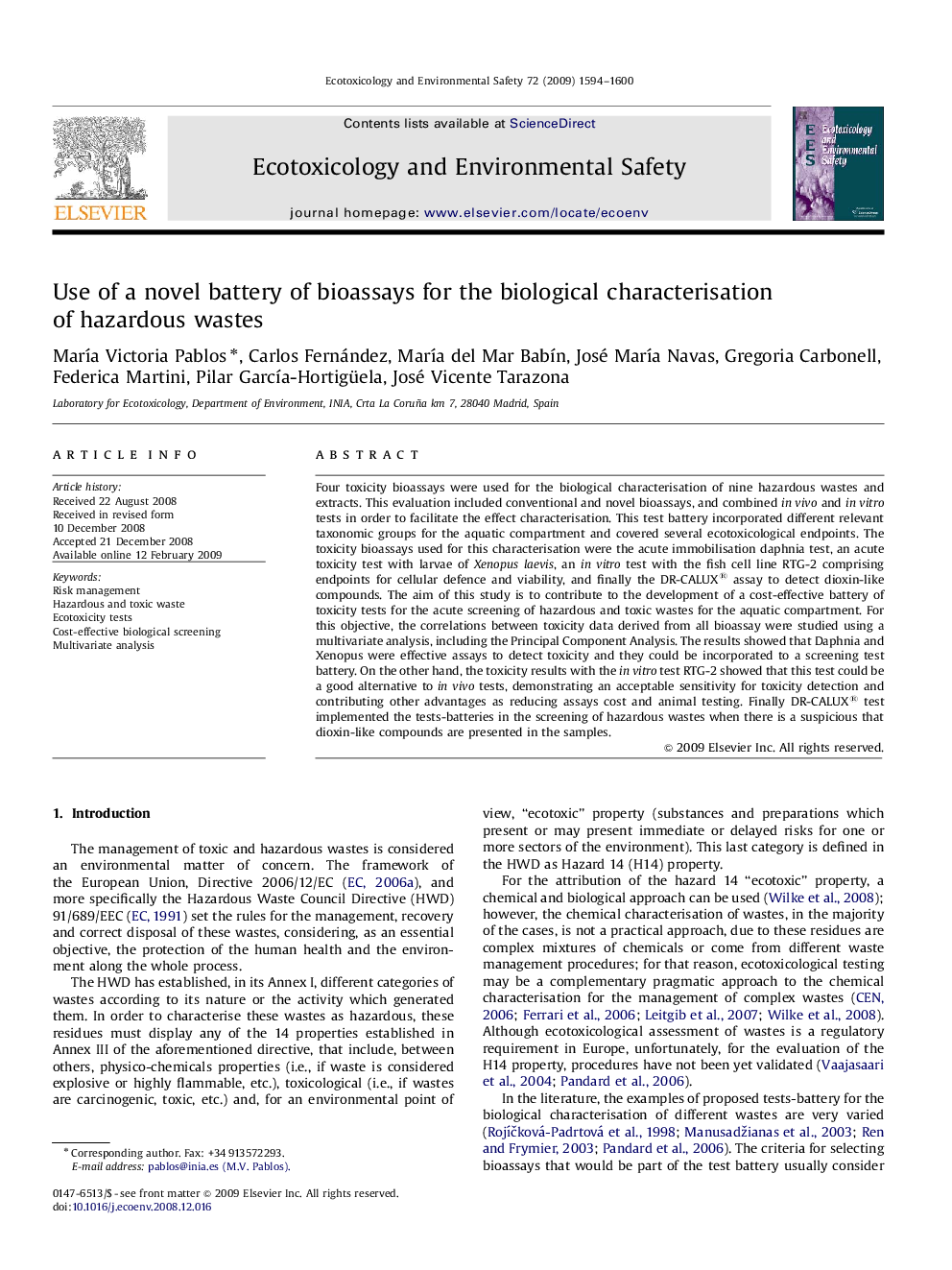| Article ID | Journal | Published Year | Pages | File Type |
|---|---|---|---|---|
| 4421784 | Ecotoxicology and Environmental Safety | 2009 | 7 Pages |
Four toxicity bioassays were used for the biological characterisation of nine hazardous wastes and extracts. This evaluation included conventional and novel bioassays, and combined in vivo and in vitro tests in order to facilitate the effect characterisation. This test battery incorporated different relevant taxonomic groups for the aquatic compartment and covered several ecotoxicological endpoints. The toxicity bioassays used for this characterisation were the acute immobilisation daphnia test, an acute toxicity test with larvae of Xenopus laevis, an in vitro test with the fish cell line RTG-2 comprising endpoints for cellular defence and viability, and finally the DR-CALUX® assay to detect dioxin-like compounds. The aim of this study is to contribute to the development of a cost-effective battery of toxicity tests for the acute screening of hazardous and toxic wastes for the aquatic compartment. For this objective, the correlations between toxicity data derived from all bioassay were studied using a multivariate analysis, including the Principal Component Analysis. The results showed that Daphnia and Xenopus were effective assays to detect toxicity and they could be incorporated to a screening test battery. On the other hand, the toxicity results with the in vitro test RTG-2 showed that this test could be a good alternative to in vivo tests, demonstrating an acceptable sensitivity for toxicity detection and contributing other advantages as reducing assays cost and animal testing. Finally DR-CALUX® test implemented the tests-batteries in the screening of hazardous wastes when there is a suspicious that dioxin-like compounds are presented in the samples.
